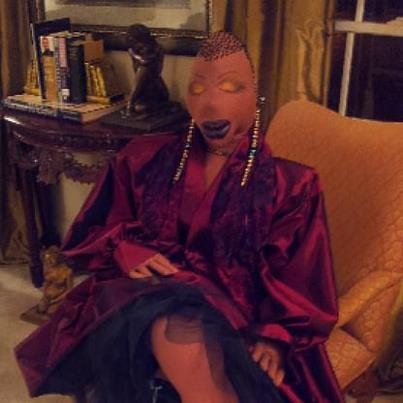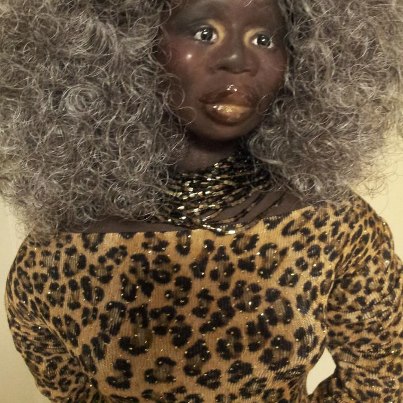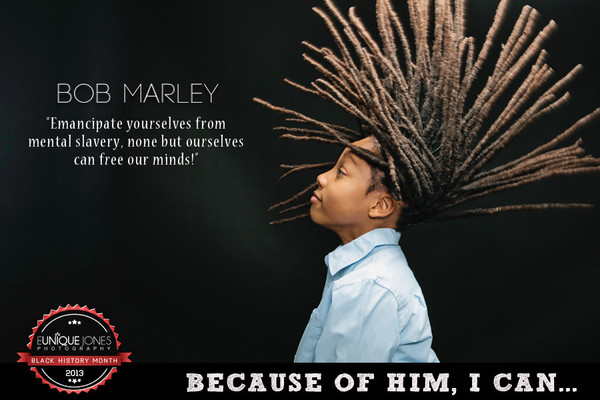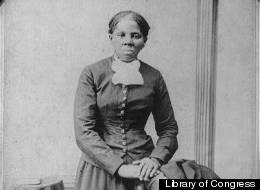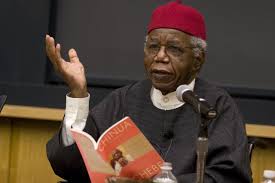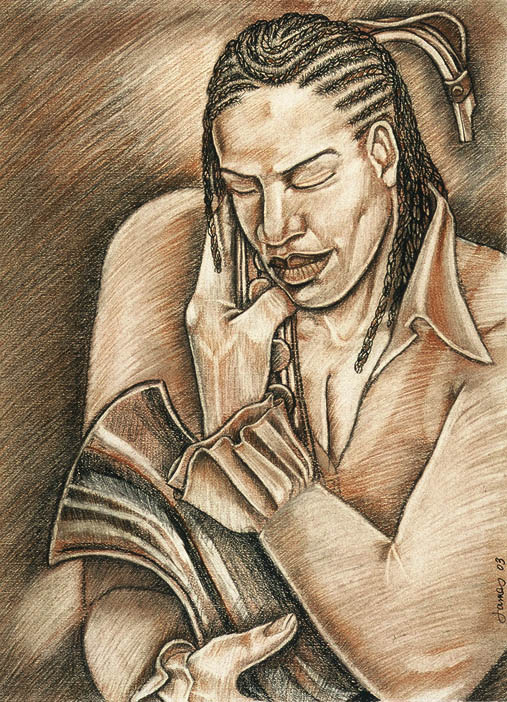Blue Eyed Soul Singers – Is There A Visual Preference For Whiteness? (VIDEO)
Blue Eyed Soul Singers
Justin Timberlake For his debut album, “Justified,” Timberlake enlisted hip-hop producers Timbaland and Pharrell Williams and has since kept close ties to hip-hop and R&B by appearing on songs with Beyonce, T-Pain, Ciara and Snoop Dogg, to name a few.

Adele Known for her soulful tracks, the Grammy Award-winning singer has often compared her lyrics to poetry and credits Jill Scott as one of her many inspirations as an artist.
Teena Marie “Square Biz” – featuring what is considered an early rap lyric with its reference to poet Nikki Giovanni — has been a mainstay on black radio stations since it was released in 1980.
Eminem In addition to being one of the biggest-selling rap acts of all time, Eminem has been heralded as one of the most talented rappers ever and is credited with discovering and signing New York MC 50 Cent to his Shady Records label.
Justin Timberlake, ‘The 20/20 Experience’: Is There A Visual Preference For Whiteness? (VIDEO)
Justin Timberlake made his triumphant return to the music charts this week as the singer’s latest opus, “The 20/20 Experience” landed at number one selling over 968,000 copies. An accomplishment, which has resulted in the singer’s best sales week ever.
While some may have a distaste for the album’s lead single, “Suit & Tie,” or have made comparisons to his fellow blue-eyed soul mate, Robin Thicke, others are taking note to the increasing trend of white artists becoming the face of black music.
On Wednesday, Princeton Center professor Imani Perry joined host Marc Lamont Hill on HuffPost Live to discuss if a visual preference for “whitness” really exists in today’s pop culture.
‘The Face’ Winner Announced, Devyn Abdullah Becomes Spokeswoman For Ulta Beauty (PHOTO)
The Huffington Post | By Julee Wilson
Devyn Abdullah is the first winner of “The Face,” Naomi Campbell’s modeling reality show. The 21-year-old New York City native beat out a bevy of beauties for the title while competing on supermodel Karolina Kurková’s team.
Devyn’s win has also earned her the opportunity to front Ulta Beauty’s 2013 fall and holiday campaigns.
We’re just glad Devyn managed to make it through the season without bodily harm from Naomi. In fact, the iconic, yet ill-tempered, supermodel was relatively tame besides dolling out a few tongue lashings to whip the aspiring models into shape.
Devyn was the cause of one of Naomi’s flare ups after announcing that she didn’t consider herself “a black girl model.” Naomi declared the sentiment a “disgrace,” and we agree.
Nevertheless, Devyn bounced back from the gaffe and ultimately won the entire competition. Although she might be out of touch when it comes to the homogenous (and often racist) industry she is now entering, Devyn seems to at least understand the magnitude of her win.
“It’s me getting my foot in the door of the modeling industry, and I’m really excited about it. I want people to love me for me, to be attracted to me for my story and where I come from and to recognize me as a businesswoman. It’s amazing,” Devyn told Time. “Being a single mother, working four jobs before I did this show—any single mother can relate to how hard that is. I was made to model and I was made to be a mother, so why not do just that? The Face definitely helped me with it.”
Congrats, Devyn! We’re looking forward to seeing the Ulta campaign and following your career.
Vanessa Williams, Daughters Jillian And Melanie Strike A Pose & Talk Ageless Beauty For Allure
The Huffington Post | By Julee Wilson
Last week Allure revealed its first-ever anti-aging survey for the April 2013 issue. Amongst fascinating findings on sex appeal, beauty and celebrities–the study also found that black women believe they age the best. Duh! Black don’t crack.
The glossy tapped a few age-defying stars to be photographed with their daughters for the issue, which included actress Vanessa Williams and her daughters Jillian Hervey and Melanie Hervey.
“The Golden Age” feature also spotlighted Mary Steenburgen and daughter Lilly McDowell Walton, as well as Andie MacDowell along with her girls Rainey Qualley and Margaret Qualley.
SCROLL DOWN FOR PHOTO
These starlets have certainly aged beautifully and have passed down fabulous genes (and beauty wisdom) to their children. In a behind-the-scenes video documenting the shoot, Jillian, Vanessa’s 23-year-old daughter, says her mom is her role model for aging gracefully. “I try to do what she does and she looks fabulous.”
We wonder if that will include Botox?
Vanessa, 50, admits that she has undergone the wrinkle-zapping procedure, but only in the capable hands of those who will insure she can make expressions (a must-have when working as an actress). But you can’t fully hold off Father Time and gravity–even with poison shots to the face–so we think she looks pretty damn good for her age.
Here’s a look at Vanessa and her daughters in April’s Allure. Stunning, right?
Patricia Coleman-Cobb Artist (Video)
Patricia Coleman-Cobb is the award-winning designer and creator of The Cobblestone Collection, a collection of handmade, sculpted, and soft sculptured figures. The collection also includes many other works of art including sculpted busts, framed art, and beautifully sculpted faces encased in exquisitely framed shadow boxes. Ms Coleman-Cobb has personally hand crafted each and every detail of her collection. You won’t help but be amazed at how soulful and expressive the characters in her artwork are. By simply looking at them, you will be able to imagine what they may be thinking, or feel their emotion.
The collection has received an enthusiastic response from the public. Serious collectors from across the globe have collected these one-of-a-kind and limited edition pieces. The figures have won numerous prizes and awards over the years. Her work has also been featured in galleries, magazines, newspapers, books, traveling exhibits, and television.
Ms Cobb has now added another title to her resume. She is the author of her first book, “Angels in the Mud”. This talented artist takes you on a soulful voyage intertwining her life and her art with a common thread. “Angels In The Mud” is a wonderful conversation piece and it would be a lovely addition to your coffee table collection. This is a 148-page book with pictures of Ms Cobb’s characters and stories about her life that caress the mind and soothe the spirit.
Ms Cobb was born in Philadelphia, and is a graduate of Cheyney University. There she earned a Bachelor of Science Degree in Clothing and Textiles. Before evolving into a full time artist, she taught at The Art Institute of Philadelphia for twelve years. She is married to Larry G. Cobb, a local attorney, and they have three sons.
CHICAGO: Hale Woodruff

Rising Up: Hale Woodruff’s Murals at Talladega College
March 23 – June 16, 2013
78 East Washington Street, 4th Floor Exhibit Hall
Chicago, IL
FROM THE CHICAGO READER:
In 1938, Talladega College commissioned the Harlem Renaissance artist Hale Aspacio Woodruff to paint six murals to hang in a campus library. Three tell the story of the slave ship Amistad: an onboard mutiny, the trial of the captives, and their eventual return to Africa. Three more depict the Underground Railroad; the first day of student registration at Talladega, one of the country’s first all-black colleges, in Alabama in 1867; and the building of Savery Library, the eventual home of Woodruff’s work, in 1937. Woodruff’s vibrant, large-scale murals were influenced by American regionalist style, a Mexican sojourn during which he apprenticed to Diego Rivera, and the cubism he studied in Paris. He returned from France in 1931 to chair the first art department for African-American students at Atlanta University; also in the 30s, Woodruff, who was born in Cairo, Illinois, painted murals for the Works Progress Administration. He went on to teach at Spelman College, Clark University, and at Talladega before joining the art faculty of New York University, where he taught until his retirement. In 2011, Atlanta’s High Museum of Art collaborated with Talladega College on an extensive conservation project to prepare the murals for a multicity your, removing them from Savery Library for the first time. At the Chicago Cultural Center they’ll hang alongside other, smaller paintings and prints from throughout Woodruff’s career. —Janet Potter
RELATED PROGRAMS:
Lecture
“Painting Through the Past: The Amistad Murals and the Crux of Slavery in Hale Woodruff’s Artistic Practice”
Thursday, April 25, 5 pm
Nicholas Miller, PhD Candidate
Department of Art History, Northwestern University
Chicago Cultural Center, 1st Floor Garland Room
Gallery Talks
Thursday, April 18 and Thursday, May 16, 12:15 pm
Daniel Schulman, Program Director/Visual Art
Department of Cultural Affairs and Special Events
Chicago Cultural Center, 4th Floor Exhibit Hall
Posted Yesterday by Black Artist News
Because of Them, I Can
[easyrotator]erc_31_1351232214[/easyrotator]
As a motivational speaker and a photographer, I recently realized that my lens can also be my microphone. For Black History Month, I wanted to create a campaign that would empower and excite young people about their history and their future in a creative and yet relatable way. I thought about my two sons and how they were both born during President Barack Obama’s election and re-election. How awesome is that?! From there, I began to think about all of the individuals, past and current, who have and/or continue to blaze new trails and pave the way for the future. Because of Them, We Can.
With each new day that a photograph was released, I realized more and more that 28 days just wasn’t enough time. There are so many people to pay homage to and so many young and impressionable minds to positively influence…now.
This site was created as a way to keep you updated about the campaign and as a way to win your support. After the request of many, I have made posters and calendars available for sale. Your support will enable me to continue this endeavor beyond Black History Month. And, while it began right outside of Washington DC, I am planning to expand to other cities throughout the country in order to engage and empower youth from all over.
Please stay tuned in here and via my Facebook Fan Page.
Thanks so much for your support and encouragement!
Eunique Jones Gibson
Harriet Tubman Monument: Obama To Designate Underground Railroad National Monument On Maryland’s Eastern Shore (Video)
The Baltimore Sun | By John Fritze
President Barack Obama will sign a proclamation Monday creating a Harriet Tubman Underground Railroad National Monument on the Eastern Shore, a designation long sought by advocates and a bipartisan group of lawmakers.
The designation protects the land from development and complements plans to create a state park in Dorchester County, where Tubman was born, escaped slavery and helped lead other slaves to freedom. The monument will be managed by the National Park Service.
Members of Maryland’s congressional delegation have for years sought to approve funding to honor Tubman on the Eastern Shore. The monument designation coincides with this year’s commemoration of the 100th anniversary of Tubman’s death March 10.
The Obama administration has previously designated only four national monument sites under Antiquities Act of 1906, which gives the president power to restrict the use of land. Gov. Martin O’Malley’s administration formally requested the designation last year.
john.fritze@baltsun.com
twitter.com/jfritze ___
(c)2013 The Baltimore Sun
Visit The Baltimore Sun at www.baltimoresun.com
Distributed by MCT Information Services
Chinua Achebe Obituary: A Look At The Life Of ‘Things Fall Apart’ Author
NEW YORK — The opening sentence was as simple, declarative and revolutionary as a line out of Hemingway:
“Okonkwo was well known throughout the nine villages and even beyond,” Chinua Achebe wrote in “Things Fall Apart.”
Africans, the Nigerian author announced more than 50 years ago, had their own history, their own celebrities and reputations. Centuries of being defined by the West were about to end, a transformation led by Achebe, who continued for decades to rewrite and reclaim the history of his native country.
Achebe, the internationally celebrated Nigerian author, statesman and dissident, died at age 82 in Boston on Thursday after a brief illness. He lived through and helped define traumatic change in Nigeria, from independence to dictatorship to the disastrous war between Nigeria and the breakaway country of Biafra in the late 1960s. He knew both the prestige of serving on government commissions and the fear of being declared an enemy of the state. He spent much of his adult life in the United States but never stopped calling for democracy in Nigeria or resisting literary honors from a government he refused to accept.
In traffic today in Lagos, Nigeria’s largest city, hawkers sell pirated copies of his recent memoir about the Biafra war, “There Was a Country.”
“What has consistently escaped most Nigerians in this entire travesty is the fact that mediocrity destroys the very fabric of a country as surely as a war – ushering in all sorts of banality, ineptitude, corruption and debauchery,” wrote Achebe, whose death was confirmed by Brown University, where he taught.
His eminence worldwide was rivaled only by Gabriel Garcia Marquez, Toni Morrison and a handful of others. Achebe was a moral and literary model for countless Africans and a profound influence on such American-based writers as Ha Jin, Junot Diaz and Morrison, who once called Achebe’s work an “education” for her and “liberating in a way nothing had been before.”
His public life began in his mid-20s, when Nigeria was still under British rule. He was a resident of London when he completed his handwritten manuscript for “Things Fall Apart,” a short novel about a Nigerian tribesman’s downfall at the hands of British colonialists.
Turned down by several publishers, the book was finally accepted by Heinemann and released in 1958 with a first printing of 2,000. Its initial review in The New York Times ran less than 500 words, but the novel soon became among the most important books of the 20th century, a universally acknowledged starting point for postcolonial, indigenous African fiction, the prophetic union of British letters and African oral culture.
“It would be impossible to say how `Things Fall Apart’ influenced African writing,” the African scholar Kwame Anthony Appiah once observed. “It would be like asking how Shakespeare influenced English writers or Pushkin influenced Russians. Achebe didn’t only play the game, he invented it.”
“Things Fall Apart” has sold more than 8 million copies worldwide and has been translated into more than 50 languages. Achebe also was a forceful critic of Western literature about Africa, especially Joseph Conrad’s “Heart of Darkness,” standard reading for millions, but in Achebe’s opinion, a defining example of how even a great Western mind could reduce a foreign civilization to barbarism and menace.
“Now, I grew up among very eloquent elders. In the village, or even in the church, which my father made sure we attended, there were eloquent speakers. So if you reduce that eloquence which I encountered to eight words … it’s going to be very different,” Achebe, who attacked the novel in a landmark lecture and essay “An Image of Africa,” told The Associated Press in 2008. “You know that it’s going to be a battle to turn it around, to say to people, `That’s not the way my people respond in this situation, by unintelligible grunts, and so on; they would speak.’ And it is that speech that I knew I wanted to be written down.”
His first novel was intended as a trilogy and the author continued its story in “No Longer At Ease” and “Arrow of God.” He also wrote short stories, poems, children’s stories and a political satire, “The Anthills of Savannah,” a 1987 release that was the last full-length fiction to come out in his lifetime. Achebe, who used a wheelchair in his later years, would cite his physical problems and displacement from home as stifling to his imaginative powers.
Achebe never did win the Nobel Prize, which many believed he deserved, but in 2007 he did receive the Man Booker International Prize, a $120,000 honor for lifetime achievement. Achebe, paralyzed from the waist down since a 1990 auto accident, lived for years in a cottage built for him on the campus of Bard College, a leading liberal arts school north of New York City where he was a faculty member. He joined Brown in 2009 as a professor of languages and literature.
Achebe, a native of Ogidi, Nigeria, regarded his life as a bartering between conflicting cultures. He spoke of the “two types of music” running through his mind, Ibo legends and the prose of Dickens. He was also exposed to different faiths. His father worked in a local missionary and was among the first in their village to convert to Christianity. In Achebe’s memoir “There Was a Country,” he wrote that his “whole artistic career was probably sparked by this tension between the Christian religion” of his parents and the “retreating, older religion” of his ancestors. He would observe the conflicts between his father and great uncle and ponder “the essence, the meaning, the worldview of both religions.”
For much of his life, he had a sense that he was a person of special gifts who was part of a historic generation. Achebe was so avid a reader as a young man that his nickname was “Dictionary.” At Government College Umuahia, he read Shakespeare, Dickens, Robert Louis Stevenson and Jonathan Swift among others. He placed his name alongside an extraordinary range of alumni – government and artistic leaders from Jaja Wachukwa, a future ambassador to the United Nations; to future Nobel laureate Wole Soyinka; Achebe’s future wife (and mother of their four children) Christine Okoli; and the poet Christopher Okigbo, a close friend of Achebe’s who was killed during the Biafra war.
After graduating from the University College of Ibadan, in 1953, Achebe was a radio producer at the Nigerian Broadcasting Corp., then moved to London and worked at the British Broadcasting Corp. He was writing stories in college and called “Things Fall Apart” an act of “atonement” for what he says was the abandonment of traditional culture. The book’s title was taken from poet William Butler Yeats’ “The Second Coming,” which includes the widely quoted line, “Things fall apart; the centre cannot hold.”
His novel was nearly lost before ever seen by the public. When Achebe finished his manuscript, he sent it to a London typing service, which misplaced the package and left it lying in an office for months. The proposed book was received coolly by London publishers, who doubted the appeal of fiction from Africa. Finally, an educational adviser at Heinemann who had recently traveled to west Africa had a look and declared: “This is the best novel I have read since the war.”
In mockery of all the Western books about Africa, Achebe ended “Things Fall Apart” with a colonial official observing Okonkwo’s fate and imagining the book he will write: “The Pacification of the Primitive Tribes of the Lower Niger.” Achebe’s novel was the opening of a long argument on his country’s behalf.
“Literature is always badly served when an author’s artistic insight yields to stereotype and malice,” Achebe said during a 1998 lecture at Harvard University that cited Joyce Cary’s “Mister Johnson” as a special offender. “And it becomes doubly offensive when such a work is arrogantly proffered to you as your story. Some people may wonder if, perhaps, we were not too touchy, if we were not oversensitive. We really were not.”
Achebe could be just as critical of his own country. The novels “A Man of the People” and “No Longer at Ease” were stories of corruption and collapse that anticipated the Nigerian civil war of 1967-70 and the years of mismanagement that followed. He not only supported Biafra’s independence, but was a government envoy and a member of a committee that was to write up the new and short-lived country’s constitution. He would flee from Nigeria and return many times and twice refused the country’s second-highest award, the Commander of the Order of the Federal Republic, over the lawlessness in his home state of Anambra.
In 2011, Nigeria’s presidency said Achebe’s refusal “clearly flies in the face of the reality of Nigeria’s current political situation.” Achebe responded that “A small clique of renegades, openly boasting its connections in high places, seems determined to turn my homeland into a bankrupt and lawless fiefdom.”
“I had a strong belief that we would outgrow our shortcomings under leaders committed to uniting our diverse peoples,” Achebe warned.
Besides his own writing, Achebe served for years as editor of Heinemann’s “African Writer Series,” which published works by Nadine Gordimer, Stephen Biko and others. He also edited numerous anthologies of African stories, poems and essays. In “There Was a Country,” he considered the role of the modern African writer.
“What I can say is that it was clear to many of us that an indigenous African literary renaissance was overdue,” he wrote. “A major objective was to challenge stereotypes, myths, and the image of ourselves and our continent, and to recast them through stories – prose, poetry, essays, and books for our children. That was my overall goal.”
Gambrell reported from London and can be reached at http://www.twitter.com/jongambrellAP
‘Gravity’ By Michael Haussman Speeds Up The Aging Process (VIDEO, NSFW)
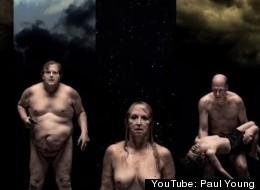
Gravity isn’t kind to aging bodies, but the decades-long transformation makes for a gentle easing into wrinkles, cellulite and skin flaps.
Not so with “Gravity,” a video installation by Michael Haussman. The artist asked his subjects to jump on a trampoline while he shot them at 2,000 frames per second. In the post-production stage, he steadied the subjects in the frame so that only their skin, muscles and fat jumped up and down. Add some spooky music and the finished video becomes a haunting homage to aging and decay.
“The overall effect is somewhat disturbing,” explains Haussman in the description of the video on YouTube. “We see a singular subject who does not move, and yet the way in which his or her skin moves seems to suggest a kind of time-lapse aging, where they suddenly go from 18 years-old to 55 in a matter of seconds.”
The hyper-aging process can transform one’s perception of a subject, all of whom are naked and holding a prop. Take, for example, Haussman’s first subject: a blonde woman holding her bra and panties.
“She is obviously not coming from a good place, and when she’s at the bottom of the jump, she suddenly ages forty years, making her a Sunset Boulevard tragedy,” says Haussman. “However when she soars up, her body is flawless and attractive and she exudes a confident beauty, making her red underwear sexually promiscuous and enticing.”
“Gravity” was on display at Young Projects Gallery from February to March in Los Angeles, Calif. The exhibit is over, but check out photos from the installation courtesy of Young Projects Gallery.
Published on Feb 16, 2013
For this installation at Young Projects in Los Angeles, Michael Haussman shot five different subjects on a trampoline and gave each a specific prop and background. As the artist says, “to the normal viewer, a person jumping on a trampoline is just a figure moving up and down and their expression is a blur of motion. To capture this action and emotion, all the subjects were shot at 2,000 frames per second, while engaged with one simple prop. Afterward, the body is completely steadied in a postproduction process known as ‘tracking’ (or motion stabilization software). This process takes the subject and steadies them in the frame so that they are no longer moving up and down. All that moves is their skin, cellulite, muscles, and weight of their respective bodies. The overall effect is somewhat disturbing: we see a singular subject who does not move, and yet the way in which his or her skin moves seems to suggest a kind of time-lapse aging, where they suddenly go from 18 years-old to 55 in a matter of seconds.”
Indeed, to some viewers the implied aging that occurs on screen might appear like a special effect or CGI—where soft legs suddenly become riddled with cellulite, or a face suddenly gains wrinkles and bags under the eyes. And yet no effects were applied to the figure at all. Everything that is seen on screen is entirely due to the effects of gravity on the body. Nothing more, nothing less. As the figure hits the bottom of the jump, wrinkles and abnormal shapes appear. But as they rise to the top of the jump, they seem to become younger, fresher and more buoyant.
For Haussman, “this emotional shift from optimistic youth to depressed older age provokes a very strong, emotional effect in the viewer and leads to a new reading of the human form. Each person interacts with a simple, yet symbolic prop in order to gain more depth into this radical emotional shift, and this prop seems to suggest a narrative. We see, for instance, a voluptuous woman, with pristine white skin and red hair floating upward against a cold, dark, chunky wall. Once gravity calls her back to earth, the red ink swirls now fall like blood onto her shoulders and neck.”
Not much further away is the image of a large naked man pointing a pistol at the screen. Explains Haussman: “The pistol is an iconic image we have seen before — from movies, magazines, to the Wild West — but never in this context. To suddenly take the clothes off this man and expose his emotions, as he goes from dark, brooding, old man, darting his eyes, paranoid, searching for someone to shoot; to his highest apex where he is a happy, confident younger man, with a child-like expression, creates a psychotic shift in emotion.”
Similarly, a young blonde woman clutches her red bra and panties. For Haussman, the use of the color red as underwear “seems to be judgmental of her character, along with her smeared lipstick and mascara. She is obviously not coming from a good place, and when she’s at the bottom of the jump, she suddenly ages forty years, making her a Sunset Boulevard tragedy. However when she soars up, her body is flawless and attractive and she exudes a confident beauty, making her red underwear sexually promiscuous and enticing.”
“Lastly and maybe most shocking is the only close-up of the show. An older woman’s face is filmed in close-up as rain provides the most magical result of the effect in the entire ensemble. This woman seems optimistic and fine with age and the rain. She almost seems to be living out a great memory. Her face seems to laugh with joy. She has a child-like expression. Then as she gets to the bottom on the jump the rain seems to hit harder on her body and one can see heavy streams of water rolling down her face as her skin and expression seem to drop in extreme proportions. The rain runs with the contours of her wrinkles, cascading down her sagging jaw, down the loose-skinned neck, drooping eyes, in such a dramatic fashion, one is immediately reminded of typical effects found in horror films.”
From a formal point of view, Gravity borrows equally from classical painting traditions as some of the great typological works by Eadweard Muybridge, Bernd & Hilla Becher and others. Indeed, each of the works uses a strong heavenly top light—typically used by Renaissance masters—which dramatically exposes the flesh as if it were moving brush strokes and reemphasizes the relation with the heavens, gravity and sheer weight of the world. What’s more, the uniformity of the figures, where each is recorded in the same position, and under the same extreme scrutiny, is a kind of typology that contrasts the more emotional effects of the musical score and/or subject matter. All five screens are presented floating in between the ceiling and floor in a vertical format, and paired with an identically-sized mirror, which frames the viewer in the exact same way, and with the same lighting.
Shown at Young Projects in Los Angeles January through March 2013
How to Become a Professional Artist (Video)
How to Approach an Art Gallery for Representation (Video)
Kerream Jones, Artscape 2010, African American Art – African American Artist (Video)
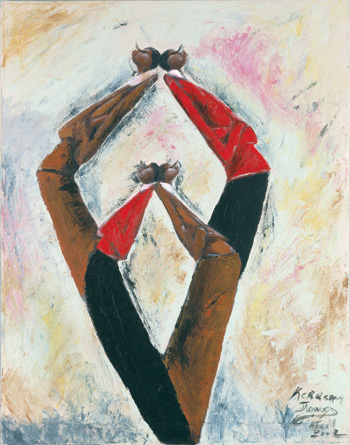
Although the term “Starving Artist” does not apply to the Painter, Kerream Jones, the hunger of the self-described visual griot is evident in the sensual depths of his paintings, the relentless drive of his business ventures, and in his appreciation for all things creative, expressive, and true. Since beginning his journey toward artistic excellence as a high school student, Kerream has gone on to create some of the most definitive and distinctive work to emerge out of the modern era of fine art. Among them are Long Day, Sleeping Beauty, and Déjà Vu: evocative and iconic pieces steeped in rich earth tones and languid poses. Kerream’s work effortlessly infuses the bright and dark realities of life with the fantasy of frozen moments. Emotions seem to leap off his brush, land on the canvas, and distill art from the vapors of life.
A consummate businessman as well as a passionate artist, Kerream is the owner of Kamarja Art, a publishing and fine art company he founded in 1999 that serves as the distribution force behind his expanding collection of original works, limited editions, artist’s proofs, and prints. Determined to allow his talents to work for him, Kerream has succeeded in establishing Kamarja as a formidable enterprise, building a respectable collector base and traveling to cities across the country as a featured artist in well received and vastly popular exhibits and shows. Ambitious to a fault, focused to the highest degree, and motivated by the desire to create and distribute works of powerful art, Kerream continues to set new standards by broadening Kamarja’s influence in the marketplace and branding his own name and style in the minds of consumers from all different walks of life.
Beginning as an illustrator in high school, Kerream was first introduced to the art world through his imitations of comic book characters and sketches. Soon thereafter he was encouraged by an art teacher to examine the craft more seriously and challenge himself to seek his own style. After entering and winning several art contests, Kerream went on to attend the Art Institute of Atlanta, where he studied graphic design, and the American Intercontinental University in Atlanta, where he graduated with a degree in visual communications. Wasting little time, Kerream immediately set about the task of joining the art community in Atlanta and constructing a business operation that would serve as a platform for his burgeoning catalogue.
A long with several personal appearances on television, Kerream’s work has appeared in such publications as Upscale, the Dallas News, Atlanta Tribune: The Magazine, the 2003 Pepsi Black History Calendar, and other major media. In 2007 Kerream was chosen as the featured artist for the 29th Annual Chicago Jazz Festival, an honor that included the commission of his piece Mixing It Up as the event’s official design image for marketing and promotional materials.
From the rhythmic hues of Jazz Rehearsal, to the quiet pain of Untitled, the work of Kerream Jones is singular in its ability to examine a moment and create the context that surrounds our joy, and the emotions that encapsulate our sadness. His hunger has made him the epitome of the new artistic entrepreneur: an artist who has successfully married his talent to his ambition and merged his passion with his profession. With brush strokes dipped in colors that are vivid with universal truths, Kerream Jones has captured the world as he sees it and offered this incredible vision to all of us.
James E. Murphy, Jr., Artscape 2010, African American Art – (Video)
Who Is James E. Murphy, Jr. ?
James, a native of Baltimore, developed a special interest in art while in his fourth year of grade school. It was then that he decided to be an artist. James was blessed with having the opportunity to nurture his talent through participation in various community art programs and workshops during his preteen years which prepared him for an academic art education at the Baltimore School For The Arts High School. After which he went on to receive a Bachelor of Fine Arts Degree in visual communication from the Maryland Institute College of art.
After college, James began a career in freelance commercial art. He has completed illustrations for various publications including Physical Therapy Today Magazine and Umoja Children Inc. Greeting Cards. His work has also been showcased in various art exhibitions throughout Maryland.
Today in addition to freelance illustration, a major portion of James’s time is devoted to the fine art market through which he makes available to clientele his original artwork and reproductions of his original artwork. James also offers such commercial services as website development and logo design.
James believes that his art is a gift from God and thus a vehicle through which he can creatively express his three convictions: cultural awareness, family values and his faith in God . It is these convictions that have led James to establish his own art company, Something For Your Soul (SFYS). Through SFYS it is James’s goal to provide art that is more than merely cute wall decoration. He wishes to set a standard of art that penetrates the surface of one’s admiration and ministers to the soul.








